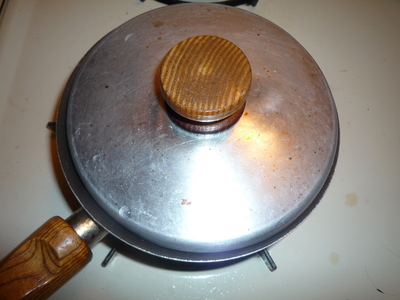Tanin Don is similar to Oyako Don in that the seasonings are the same except that the chicken is substituted with either pork or beef. Most of the time I see pork as the substitute but beef is also very good. The reason it’s called Tanin Don is because the pork or beef and the egg are not related nor are they friends, rather they are “acquaintances.”
Personally, I like Oyako Don better but I wanted to add more donburi (rice bowl) dishes since they are easy, fast and filling.
I used sukiyaki style meat which is thicker than shabu shabu but I think shabu shabu meat goes better with this dish as long as you don’t over cook the meat. I also recommend using shabu shabu style beef of you decide to go with beef.
Ingredients (Servings 2)
270 grams (approx 0.5 lb) sukiyaki or shabu shabu style pork (used sukiyaki here although shabu shabu is better
4 eggs (2 eggs per person, separated in 2 bowls)
80 grams or a quarter of a medium onion sliced
1 teaspoon of vegetable oil
2 tablespoons (30 ml) of soy sauce
4 tablespoons + 2 teaspoons (70 ml) mirin
1 tablespoon + 1 teaspoon (20 ml) dashijiru
mitsuba for garnish. (Substitute with cilantro or green onions if you can’t get mitsuba)
Directions
1) Make the rice. Electric Rice Cooker Instructions
2) Prep your ingredients. Cut the onion into thick slices and the mitsuba into inch long pieces.
3) Make the sauce and set it aside.
4) Stir fry the onions until they start to caramelize.
5) Add the pork and the sauce and simmer on low heat just until the pink is gone and the pork and onions have absorbed some of the sauce.
6) Divide the pork and onion mix into two servings and put them into small frying pans that are the same size as your bowl to make individual servings. There are special oyakodon or domburi pans so that you can slide the topping out without it falling apart. If you like your egg cooked all the way it should come out fine but since this dish should be cooked soupy with slightly runny egg, special pans are available. I found this pricey oyakodon pan on Rakuten. I’m sure you can find one for cheaper or substitute with a smaller pan like I’m doing here.
7) Put two eggs in a bowl and break the yolks and give it two quick swirls with chopsticks. Don’t beat the eggs.
8) Add 3/4 of the egg on top of the pork and simmer on low heat for about 2 minutes.
9) Add the remaining egg and top it with mitsuba and cover. Allow it to steam for 2 minutes. The egg should be slightly runny on top. Raw egg or slightly raw egg is considered delicious. In this case there will be a thin layer of hanjyuku or half cooked egg on top.
10) Serve over a big bowl of rice.
Stir fry the onions until they start to caramelize.
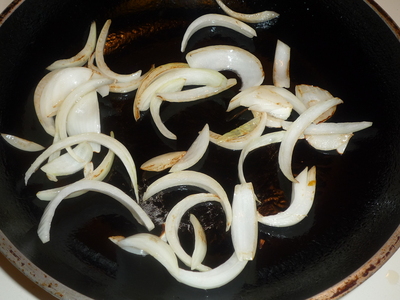
Sukiyaki pork comes packaged like this although it depends where you get it. Sometimes it’s thicker like the one I have here but I’ve also purchased sukiyaki style meat that is thinner like the kind I used for the Shogayaki post.
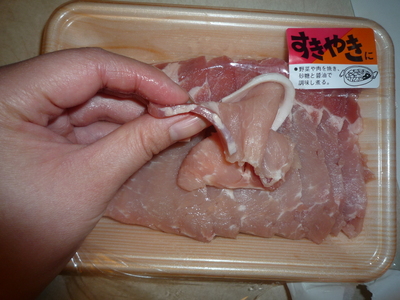
Add the pork so that they don’t get stuck to each other and form into a ball.
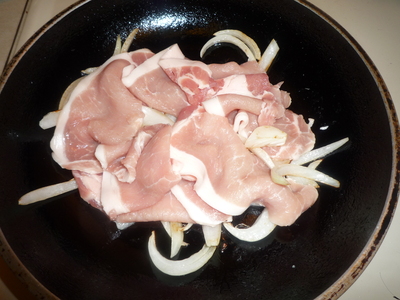
Add the sauce immediately and stir so that the meat is no longer pink.
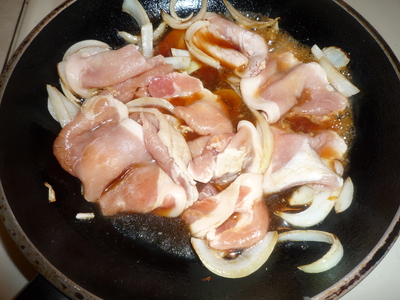
Turn the heat off immediately as soon as the meat is cooked.
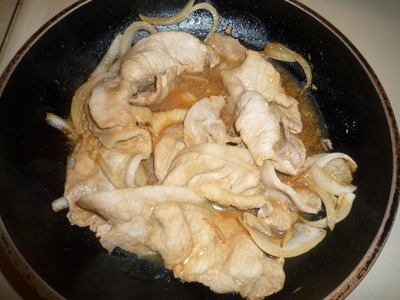
If you’re making more than one serving, transfer individual servings into a smaller pot or pan the same size as your rice bowl.
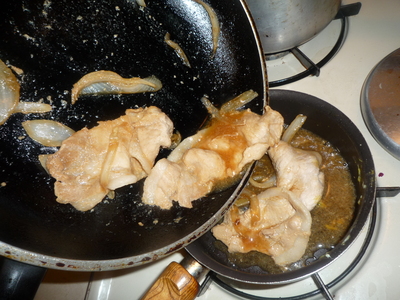
Don’t mix the eggs too much. It should look like this.
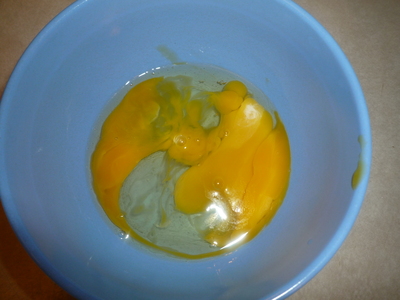
Add about 3/4 of the egg and cook until desired consistency.
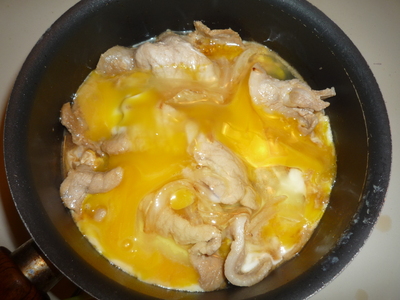
Add the rest of the egg, top with mitsuba and cover.
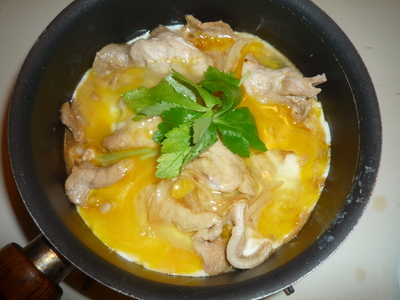
Serve it over a domburi of rice.
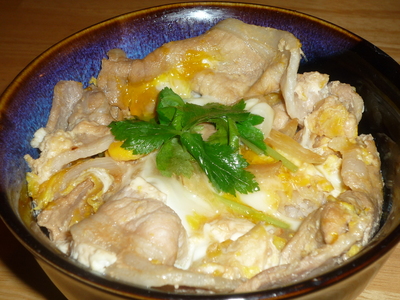

Naomi Kuwabara was born and raised in California but spent many summers in Japan growing up. She has spent time living in Hokkaido and Osaka, both meccas for Japanese cuisine. Her passion is cooking and sharing her experiences cooking Japanese food with others. Her blog Umamitopia is about her experiences cooking Japanese food. Her greatest inspirations are from her mother and grandmother. Her cooking adventures can be found at http://umamitopia.com.

